Premium Only Content
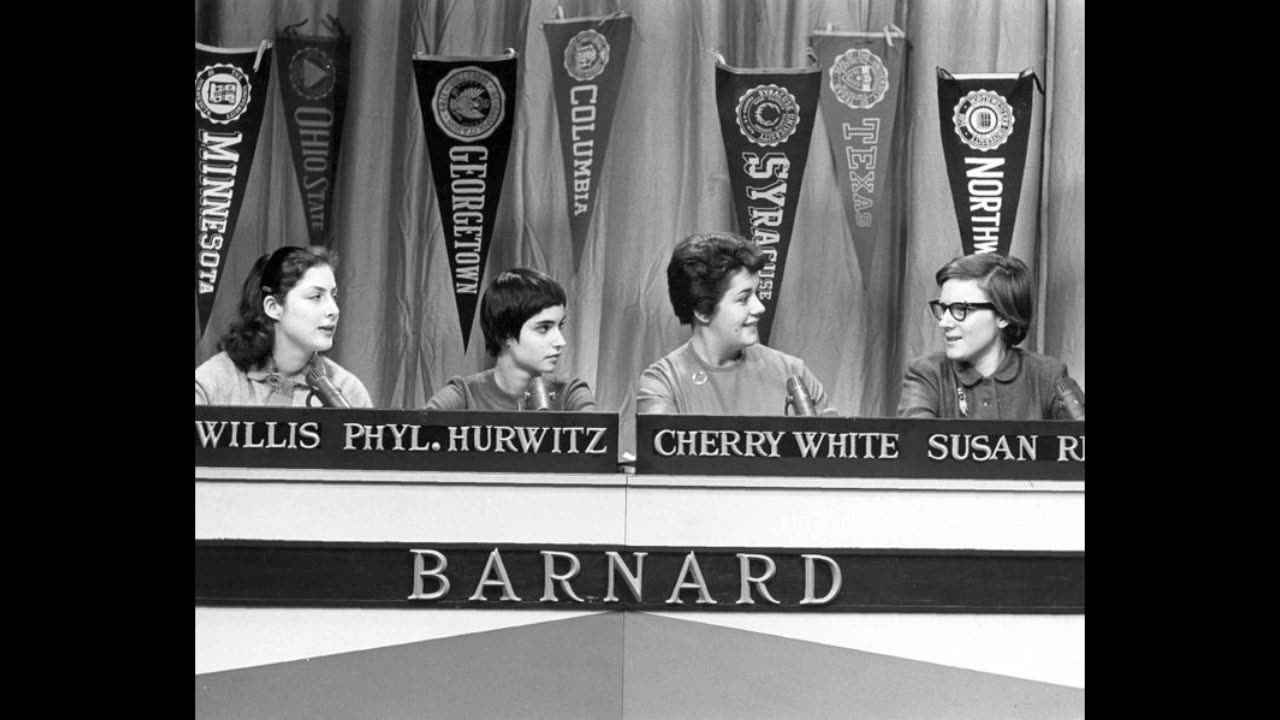
College Quiz Bowl: Minnesota v. Penn
Setting: A live radio broadcast, likely aired in the 1953–55 seasons, using remote broadcasts with teams at their respective campuses—University of Minnesota in Minneapolis and University of Pennsylvania in Philadelphia. The atmosphere would be electric, with student audiences cheering, creating a football-game-like energy, as noted in accounts of the series’ appeal.
Plot/Content:
Introduction: The host, likely Allen Ludden (a known host for early radio seasons), opens the episode by welcoming listeners and introducing the teams: the University of Minnesota, a quiz bowl powerhouse, and the University of Pennsylvania, a prestigious Ivy League contender. The rules are outlined: teams compete in toss-up and bonus questions across subjects like literature, history, science, and current events, earning points (10 for toss-ups, 20–30 for bonuses). The winning team receives a $500 grant for their school, a standard prize for the radio series.
Team Composition: Each team comprises four students, selected for academic breadth and quick recall. Minnesota’s team, given their frequent appearances, likely includes experienced players, possibly with a captain specializing in history or literature and others covering science or arts. Pennsylvania’s team, representing an Ivy League institution with a strong liberal arts tradition, would field a balanced squad, perhaps with strengths in classics or philosophy, reflecting Penn’s academic profile. No specific student names are available, as radio broadcasts rarely credited individuals.
Question Rounds: The game unfolds in multiple rounds, with the host delivering questions rapidly. Toss-up questions, open to both teams, test recall on topics like:
Literature: Naming the author of Moby-Dick (Herman Melville) or identifying a quote from Shakespeare.
History: Detailing the causes of the French Revolution or referencing 1953 events like Eisenhower’s inauguration.
Science: Explaining atomic structure or identifying penicillin’s discoverer (Alexander Fleming).
Current Events: Questions about the 1953 Korean War armistice or cultural milestones (e.g., the first color TV broadcast).
Bonus questions, awarded after correct toss-ups, require deeper analysis, such as comparing two historical figures or solving a math problem. Minnesota’s experience might give them an edge in early rounds, but Pennsylvania’s team likely counters with strong humanities knowledge, creating a competitive match.
Game Dynamics: The remote broadcast format heightens excitement, with crowd cheers audible after correct answers. Buzzers or chimes signal responses, and the host adds humor or commentary, praising quick thinking or clarifying incorrect answers. A close scoreline could lead to a dramatic final round, with questions increasing in difficulty. Sound effects and audience reactions enhance the radio experience, mimicking a sports broadcast.
Outcome: No specific result is documented, but Minnesota’s historical dominance (23 appearances in 68 matches) suggests they were favored. Pennsylvania, as an Ivy League school, would pose a formidable challenge, potentially leading to a tight contest. The episode ends with the host announcing the winner, awarding the $500 grant, and teasing the next matchup. A sponsor, likely General Electric (1953) or Good Housekeeping (1954–55), is mentioned briefly at the close.
Themes: Academic rigor, intercollegiate competition, and knowledge as entertainment, reflecting the 1950s’ emphasis on education and the rising popularity of quiz shows.
Cast and Roles:
Host: Likely Allen Ludden (unconfirmed for this specific episode but a primary host for 1953–55 radio seasons). The host reads questions, moderates, and engages listeners with a clear, charismatic delivery, ensuring the game’s pace suits radio.
Minnesota Team: Four unnamed students from the University of Minnesota, likely undergraduates or graduate students, chosen for academic versatility. Roles include a team captain (leading strategy) and specialists in subjects like history, science, or literature. Minnesota’s frequent participation implies a cohesive, practiced team.
Pennsylvania Team: Four unnamed students from the University of Pennsylvania, also academically gifted, with roles mirroring Minnesota’s—a captain and subject specialists, possibly excelling in humanities given Penn’s strengths. Their performance reflects Ivy League prestige.
Announcer: An unnamed NBC staff member, handling introductions, sponsor messages, and transitions. The announcer’s role is minor but maintains the broadcast’s professional tone.
Note on Cast: College Quiz Bowl focused on schools rather than individual players, and team rosters were not archived, per sources like Wikipedia and old-time radio archives. KUOM or university records do not provide specific names for this matchup.
Production Details:
Music: A brief instrumental theme (likely brass or orchestral) opens and closes the show, with stings between rounds, typical of 1950s radio quiz formats.
Director/Producer: Managed by NBC staff, possibly Richard Reid (later College Bowl president), with KUOM potentially assisting Minnesota’s remote broadcast.
Writer: Questions crafted by academic consultants, ensuring college-level rigor across liberal arts and sciences, tailored to the 1950s curriculum.
Sponsor: Likely General Electric (early 1953–54) or Good Housekeeping (1954–55), with a short mention at the episode’s end, avoiding mid-show commercials.
-
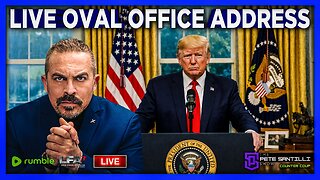 LIVE
LIVE
LFA TV
20 hours agoLIVE & BREAKING NEWS! | WEDNESDAY 12/17/25
1,233 watching -
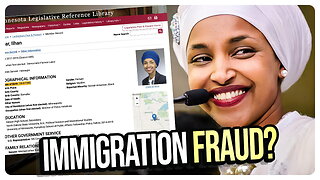 1:12:53
1:12:53
vivafrei
3 hours agoEulogizing My Pup Pudge; Did Ilhan Omar Commit Immigration Fraud? Brown Shooting Debacle AND MORE!
49.6K34 -
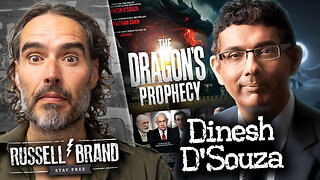 1:02:58
1:02:58
Russell Brand
5 hours agoDoes the Bible Foretell Today’s Conflicts? — Dinesh D’Souza - SF664
77K17 -
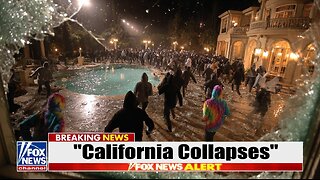 19:05
19:05
Cash Jordan
6 hours agoIllegals “DISMANTLE” LA Gated Mansions... Millionaires HOMELESS as Looters Take REPARATIONS
16.6K70 -
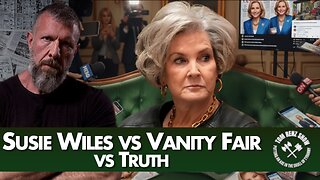 DVR
DVR
The Tom Renz Show
2 hours agoSusie Wiles vs Vanity Fair vs Truth
4.19K6 -
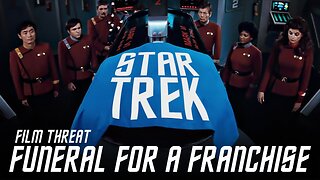 LIVE
LIVE
Film Threat
1 day agoFUNERAL FOR A FRANCHISE: STAR TREK - A SPECIAL GLOBAL EVENT | Film Threat Live
187 watching -
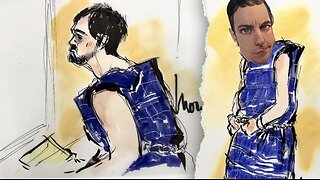 1:02:04
1:02:04
Jeff Ahern
2 hours ago $0.67 earnedNever Woke Wednesday!
12K4 -
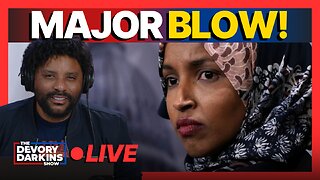 44:30
44:30
DeVory Darkins
4 hours agoIlhan Omar dealt MAJOR BLOW after CNN host catches her in a lie
165K92 -
 1:01:47
1:01:47
Timcast
5 hours agoTrump Orders "Complete Blockade" of Venezuela, Potential Act of WAR
152K129 -
 2:53:04
2:53:04
Steven Crowder
8 hours agoVanity Fair's Susie Wiles Hit Piece: Who's To Blame PLUS Special Guest Jillian Michaels
515K842